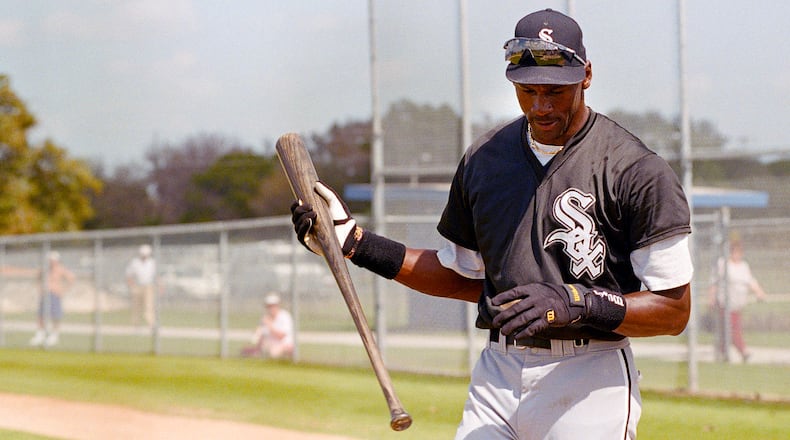The spring of 1995 proved to be a peculiar one for baseball.
In late February, Major League Baseball teams began preparing for Grapefruit League games in Florida despite being the midst of players’ strike that forced the cancellation of the 1994 World Series.
In West Palm Beach, Fla., there was no Maddux, Glavine or Grissom. Instead the Braves had assembled a group of possible replacement starters. Three hours away in Sarasota, the Chicago White Sox were getting all the attention thanks to one high-profiled minor-leaguer — a 32-year-old Double-A outfielder named Michael Jordan.
His “Airness” was starting his second season in baseball after a surprising retirement from the Bulls in October 1993. He had hit .202 in his first year with the Birmingham (Ala.) Barons.
For weeks that February, he would don the White Sox uniform while taking batting practice and performing drills with teammates.
A March 10 meeting the Braves loomed on the calendar.
But as games began days earlier, Jordan and his fellow minor league teammates refused to take the field. Jordan had a confrontation with then-Sox general manager Ron Schueler that ended with the NBA superstar opting to pack his bags and return to Chicago. On March 18, he announced his return to the Bulls with the fax message: “I’m back.”
The Braves and Jordan-less White Sox met on March 10, but not without any famous names on the roster.
Starting at third for the White Sox was Pete Rose ... Jr. (Charlie Hustle himself was in the stands at West Palm Beach Municipal Stadium.)
The son of the all-time hit king went 0-for-3, scoring a run in a 5-4 loss to Atlanta.
The strike ended a few days later and players returned as the Braves began to embark on their championship season.
Jordan? He went on the win three more NBA titles.
About the Author
Keep Reading
The Latest
Featured


